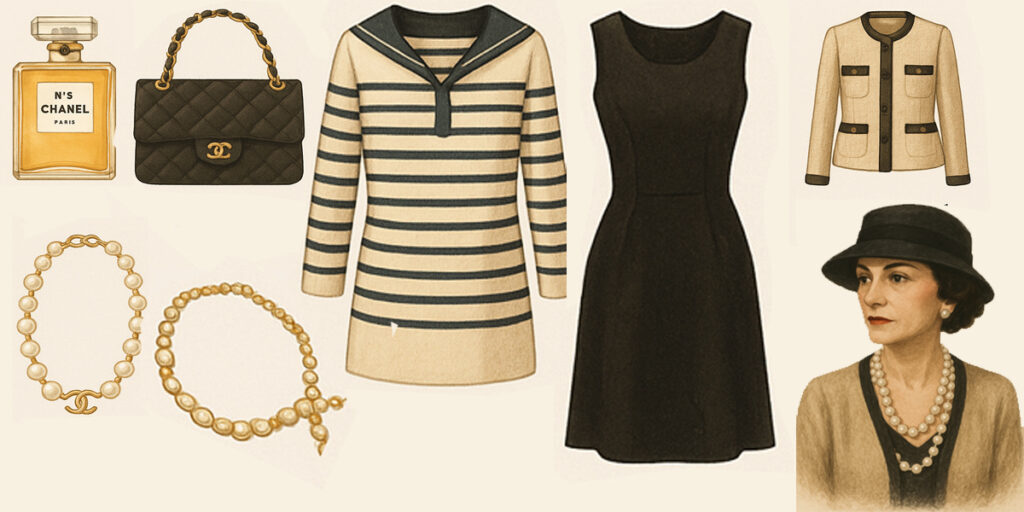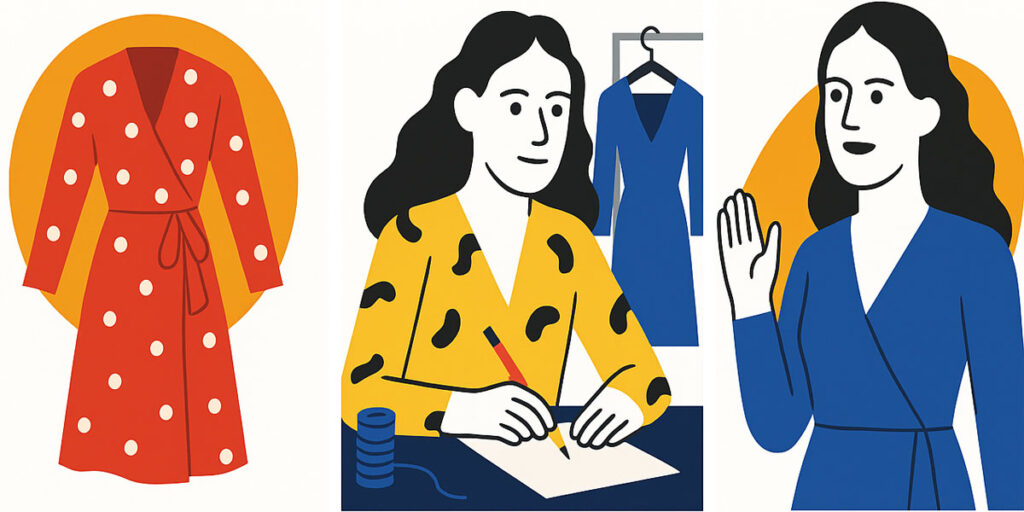Coco Chanel was born with a heart full of dreams and eyes that saw beauty where others saw only rules. Her name was Gabrielle, but the world would come to know her as Coco, a whisper of elegance that still echoes in every corner of fashion. From the dusty streets of a small French town to the glittering salons of Paris, her journey was not easy, but it was unforgettable.
She arrived in the world in 1883, a time when women were expected to be silent, laced up, and hidden behind layers of tradition. But little Gabrielle had something wild in her soul, something that couldn’t be bound by corsets or confined to the shadows. After her mother died, she was sent to an orphanage. Most would have been broken by such a beginning. Not Coco. She watched, she learned, and she dreamed.
At the orphanage, she learned to sew. Needle and thread became her secret superpower. She didn’t just stitch fabric. She stitched freedom, one seam at a time. Her fingers moved with purpose, each cut of cloth challenging the expectations of a world built by men. As she grew, so did her hunger for more. Not riches. Not fame. But the power to change the way women moved, breathed, lived.
She began in small shops, designing hats. Just hats. But even her hats whispered rebellion. Women no longer had to carry the weight of feathers and absurd shapes on their heads. Her creations were light, bold, and free. And the women who wore them felt the same. The world started to notice. Paris leaned in.
Then came the real revolution. Coco opened her first boutique in Deauville. She looked around and saw women trapped in fashion that didn’t serve them. Heavy skirts, tight corsets, suffocating layers. So she did the unthinkable—she removed the chains. She created simple lines, soft fabrics, and silhouettes that let women walk like they had somewhere to be. She borrowed from men’s wear not because she wanted women to look like men, but because she wanted women to feel as powerful as men.
The little black dress. A stroke of genius. Until then, black was for mourning. She turned it into magic. A dress that could be worn anywhere, by anyone, with confidence. It became a silent roar of elegance. Women across the world stood taller in it. Her tweed suits came next. Structured, strong, but still soft. She gave women clothes that moved with them, not against them.
And then there was the perfume. Chanel No. 5. The scent of a century. More than just fragrance, it was a signature, a story in a bottle. Coco believed a woman should smell like herself, not flowers. She wanted the perfume to linger, to be remembered, to say, I was here. And it did.
Coco Chanel didn’t just design clothes. She designed freedom. She believed in a world where women could be bold, unafraid, and beautifully themselves. She stood alone in rooms filled with men, held her head high, and spoke her mind. Her voice was soft, but her impact thundered through generations.
She wasn’t always kind. She wasn’t always right. But she was always herself. Her life was a complex tapestry of triumph and flaw, stitched with ambition and solitude. She lived through wars, heartbreak, and scandal. She lost friends and made enemies. But she never lost her vision. Fashion, to her, was more than fabric. It was a weapon. A mirror. A revolution.
Even in her later years, with silver in her hair and wisdom in her gaze, she walked with the same fire. She returned to the runway at an age when others faded quietly. Her new collections still carried her signature—simplicity, elegance, and rebellion. She reminded the world that style has no age, and courage never retires.
She passed away in 1971, in her apartment at the Ritz, alone but not forgotten. Her spirit lives in every clean-cut blazer, every confident step in high heels, every woman who dares to speak her truth with style. Coco Chanel gave the world more than fashion. She gave it a new vision of womanhood—one draped not in lace and fear, but in power, simplicity, and grace.
Coco taught the world that luxury lies not in money, but in freedom. That elegance is when you can walk into a room and feel like you belong. That fashion is not about being noticed, but about being remembered. She once said, “Dress shabbily and they remember the dress; dress impeccably and they remember the woman.” And now, the world remembers her.
Not just for the threads she wove, but for the trail she blazed.
She was Coco Chanel.
And she changed everything.
Chanel No. 5 was not just a perfume, it was a revolution in a bottle. She named it simply, like everything she did. No frills, no glitter. Just No. 5. Clean, bold, unforgettable. It wasn’t floral and sweet, it was abstract, modern, and mysterious. It smelled like power, like elegance, like freedom. Coco once said a woman who doesn’t wear perfume has no future, but with No. 5, she gave every woman a future to walk into with scent trailing behind like a signature of confidence.
The Little Black Dress became a quiet anthem of power. When the world said black was for grief, she turned it into strength. Her little black dress wasn’t just a garment, it was a rebellion stitched in grace. Short, simple, elegant—it didn’t scream, it spoke. Softly, surely, and forever. Every woman who wore it felt a part of something eternal. It became the canvas upon which confidence was painted.
The Chanel Suit was a warrior’s uniform designed with tenderness. With tweed fabric, square shoulders, and a soft finish, it allowed women to move, lead, live. She refused to use corsets, refused to suffocate the spirit. Women in her suits didn’t just dress to impress—they dressed to conquer. It wasn’t about beauty alone. It was about movement, about walking into a room like the world belonged to you.
Chanel 2.55 Bag was a freedom tool disguised as an accessory. Women had always carried purses in their hands, but Coco believed a woman’s hands should be free—free to work, to wave, to rise. So she created the 2.55, with its quilted leather, chain strap, and hidden secrets. It was elegant, practical, and daring. Just like the women who wore it. It wasn’t just a bag. It was a symbol of liberation, one gold clasp at a time.
Chanel Costume Jewelry broke the rules of what mattered and what shined. In a world obsessed with diamonds, Coco played with pearls, glass, and gold-plated dreams. She believed women should wear jewels not to show wealth but to show joy. Her jewelry didn’t whisper about money. It shouted about style, wit, and the boldness of mixing the fake with the real. She made costume jewelry precious by making it fun.
Chanel Sailor Blouse brought the sea to the streets. Inspired by men’s uniforms, she turned nautical stripes into fashion statements. She saw beauty in utility, grace in simplicity. The sailor blouse reminded women they didn’t have to be decorative—they could be strong, confident, and stylish without needing permission.
Chanel Jersey Dresses brought softness to structure. At a time when jersey was used for men’s underwear, she used it to dress queens of freedom. The fabric was cheap, but Coco made it chic. She saw how it moved, how it breathed, and she gave that breath to women who had been trapped in tight stitches for too long.
Each work of Coco Chanel didn’t just redefine clothing. It redefined courage. She gave women armor without weight. She gave them the right to walk tall, to choose how they appeared, and to demand space without apology. Every button she placed, every hem she cut, every fragrance she created carried a message—You are enough, exactly as you are.
She didn’t chase trends. She created them. And then she let the world catch up.




















